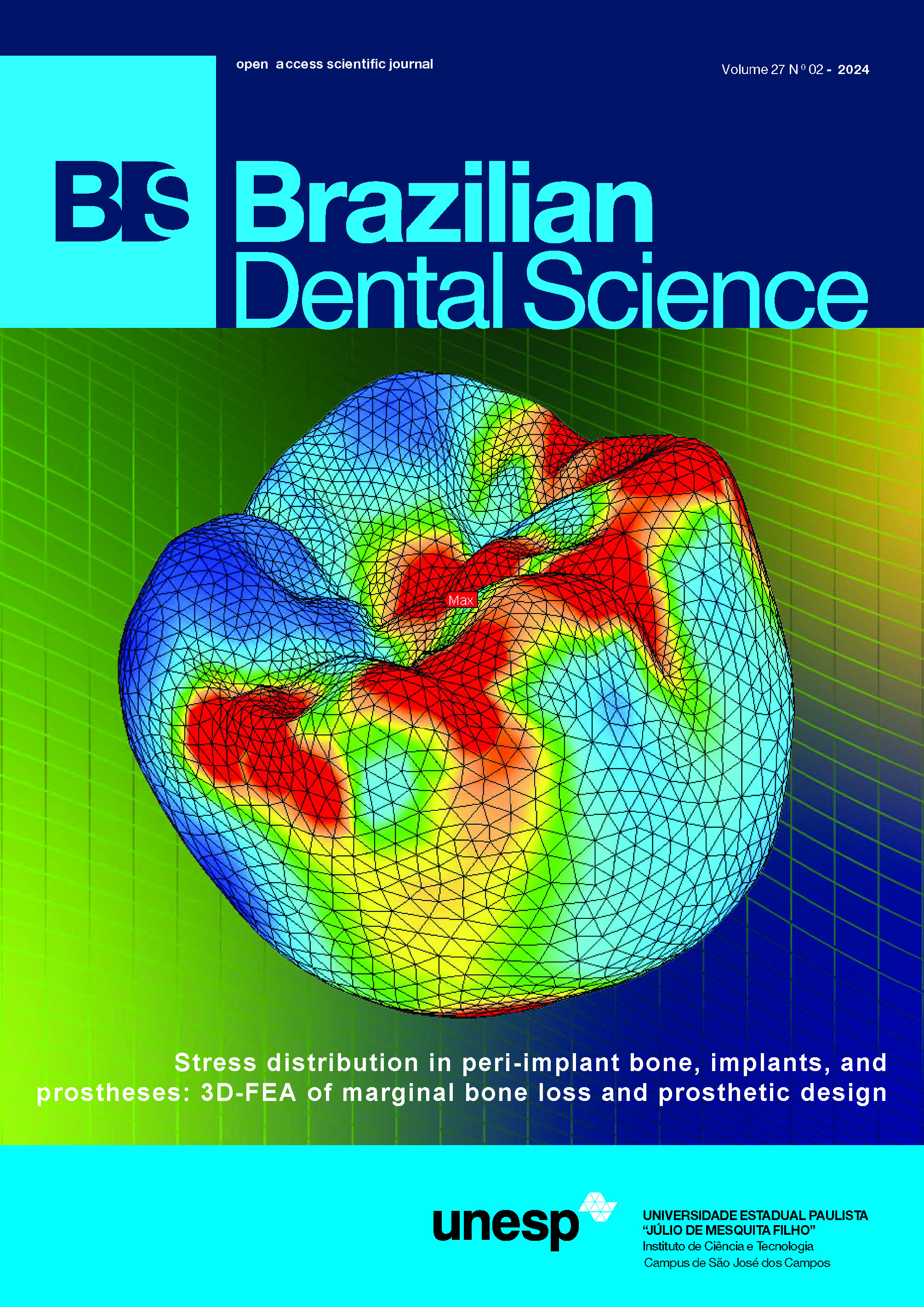How reverse planning and the use o digital devices revolutionize implantology? – Case report
DOI:
https://doi.org/10.4322/bds.2024.e4327Resumen
Objectives: The aim of the study was to demonstrate how digital devices can be applied in the field of implant dentistry. By integrating data from computed tomography, panoramic radiography, and intraoral scanning into software, it is feasible to perform virtual planning of prosthetic rehabilitation and implant placement predictably. The adoption of reverse planning increases the chances of treatment success. Material and Methods: In this case report, oral rehabilitation of the area of tooth 36 was conducted through implant placement. The implant was installed based on the virtual planning done in the software, followed by the production of a rigid static guide and guided surgery. Results: It was noted that there is a learning curve associated with the use of these technologies, requiring professionals to have theoretical and practical knowledge of digital devices. By using software and surgical guides obtained through 3D printing, it was possible to achieve high precision and preserve vital structures such as blood vessels and nerves, resulting in aesthetic and functional satisfaction for the patient. Conclusion: The use of digital devices in implant dentistry offers speed and predictability in treatment.
KEYWORDS
CAD/CAM; Dental planning; Dental prosthesis; Guided surgery; Implant.
Descargas
Descargas
Publicado
Cómo citar
Número
Sección
Licencia
Brazilian Dental Science uses the Creative Commons (CC-BY 4.0) license, thus preserving the integrity of articles in an open access environment. The journal allows the author to retain publishing rights without restrictions.
=================
COPYRIGHT TRANSFER AND RESPONSIBILITY STATEMENT
(PDF)
For all articles published in the BDS journal, copyright is retained by the authors. Articles are licensed under an open-access Creative Commons CC BY 4.0 license, meaning that anyone may download and read the paper for free. In addition, the article may be reused and quoted, provided that the original published version is cited. These conditions allow for maximum use and exposure of the work while ensuring that the authors receive proper credit. All metadata associated with published articles is released under the Creative Commons CC0 Universal Public Domain Dedication.
Before the submission, authors must obtain permission to reproduce any published material (figures, schemes, tables, or any extract of a text) that does not fall into the public domain or for which they do not hold the copyright. Permission should be requested by the authors from the copyright holder (usually the Publisher, please refer to the imprint of the individual publications to identify the copyright holder).
The authors hereby attest that the study is original and does not present manipulated data, fraud, or plagiarism. All names listed made a significant scientific contribution to the study, are aware of the presented data, and agree with the final version of the manuscript. They assume complete responsibility for the ethical aspects of the study.
This text must be printed and signed by all authors. The scanned version should be submitted as supplemental file during the submission process.




























